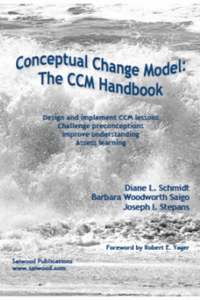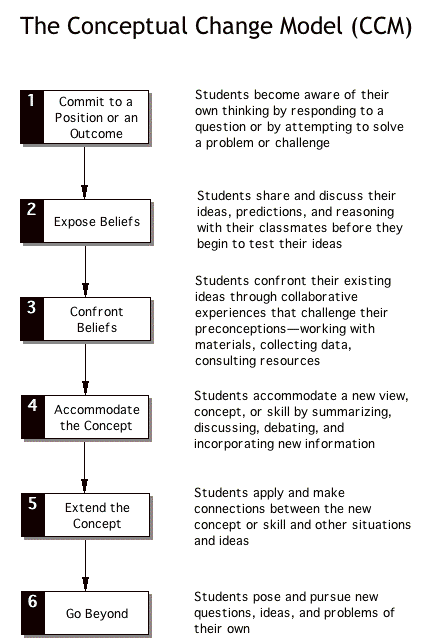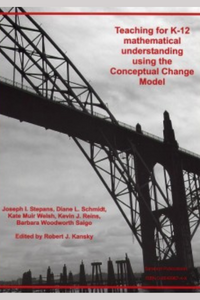Description
Authors
Diane L. Schmidt, Florida Gulf Coast University; Barbara Woodworth Saigo, Saiwood Resources; Joseph I. Stepans, University of Wyoming
Foreword by Robert E. Yager, University of Iowa
Preface
Purpose of this handbook
Creating Conceptual Change Model (CCM) Lessons: The Handbook is a guide for designing lessons to bring about deep and meaningful understanding of the content we teach. The Conceptual Change Model (CCM), developed by Dr. Joseph I. Stepans, is a formalization of the theoretical models arising from the research of Posner, Strike, Hewson, and Gertzog (1982), Strike and Posner (1985) and others. It has proved successful for thousands of teachers who have used lessons published in previous Stepans books as well as their own CCM lessons.
This small book concisely introduces the theory, research, and constructivist philosophy on which the six-phase Conceptual Change Model is based. In addition, this book will help the reader understand why each component of the model is important and provide guidance in how to develop CCM lessons.
The philosophy for the CCM and the approach of the book are based on the cumulative research on learning and teaching, particularly over the past three decades. Many references are cited, but they should be looked upon as only a sample of the relevant literature. Even a cursory review of the literature will reveal thousands of studies, articles, books, and commentaries about constructivist-based learning theory, teaching and assessment strategies, and classroom dynamics.
The CCM has been featured in three other books for science, mathematics, and professional development. The science and mathematics books provide numerous classroom lessons. Readers unfamiliar with the CCM might want to try a lesson from one of these books (or this book) to get a feel for the process. The third book features the CCM as the centerpiece of a nationally recognized professional development model, the Wyoming TRIAD (WyTRIAD), named in recognition of its origin.
We anticipate that some readers already will be familiar with these three books, and may wonder how this book differs. Those books tell how to use the CCM. This book provides practical instruction on how to design learning materials using this particular model. Its narrative approach is based on the first-hand wisdom of teachers and professors who have used and studied the impact of the model.
Intended audience
- This book is written for teachers, university educators, graduate students, preservice teachers, professional development facilitators, and anyone else who is interested in helping learners construct meaning from their educational experiences.
- It will be especially helpful to those who are already familiar with the CCM and who would like a concise reference.
- This book will be an excellent resource for methods courses, workshops, and other situations that focus on inquiry-based lesson planning and teaching for understanding.
What’s inside
The heart of the book is its attention to the view of learning as a process of conceptual change and the implications of that view for teaching. It explains how to develop CCM lessons that bring about deep understanding as learners gain insights into their own thinking and that of their classmates. It relates learning theory to practical applications.
Chapter 1 introduces the CCM and the historical and research basis of conceptual change approaches to learning and teaching.
Chapter 2 discusses factors to consider in the lesson pre-planning stages, including things to consider in identifying which topic, concept, and/or skill should be addressed in the lesson.
Chapters 3 through 8 present guidance on how to construct lesson components following each of the six phases of the CCM. Each of these six chapters includes:
- A description of the phase
- An explanation of why the phase of the lesson is important to the learner and the learning process
- A description of experiences the learner should have during that phase of the lesson
- A description of appropriate instructional strategies
- Guidance in planning that phase of the lesson
- Specific annotated examples of four lessons illustrating how they were developed by the authors
- A description of the roles of the students and teacher during the implementation of that phase of the lesson
- Opportunities for assessing studentsÂ’ understanding and dispositions
Chapter 9 discusses the many opportunities for assessing development of student understanding afforded by the CCM and for evaluating the effectiveness of instruction.
The book is concluded by References and Appendices.




